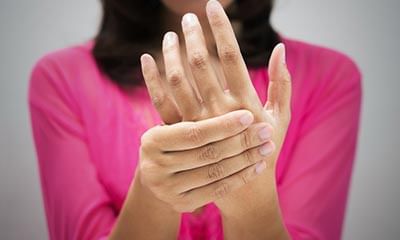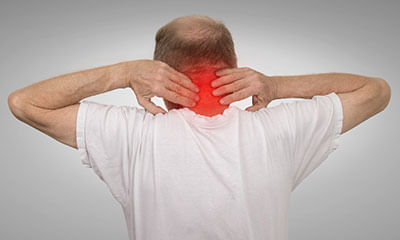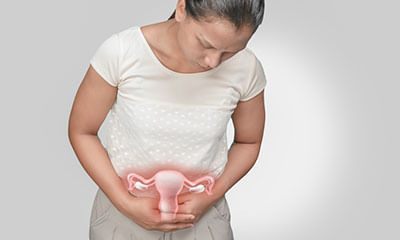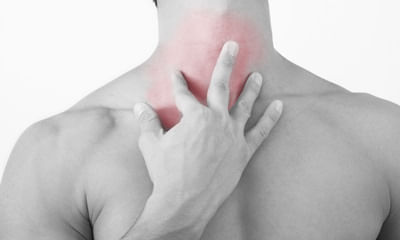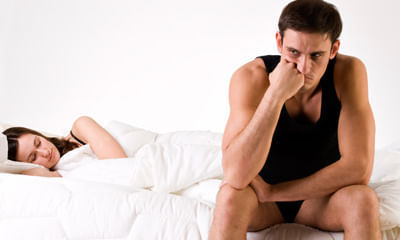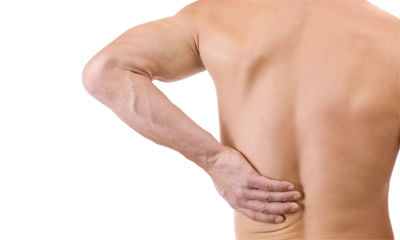My Right Side Of My Head Feels Numb
I sm 39 year old female. My problem is I feel numbness and irritation in my left side of head. I feel like pulling my ha ...
Ask Free Question
Its difficult to comment for these vague complaints, please consult your local neurologist for physical examination and neuroimaging (if required) to reach a diagnosis.
I am 34 year old. I have left neck, back and hand pain. Head and hand tingling sometimes.in xray report cervical spondyl ...
Ask Free Question
Yes it is normal cervical spondylosis– chronic condition with radiating pain this is cervical pain (neck pain) and that's the reason the pain radiates until the shoulder blades. If you keep ice that would help and along side you can do hot water fermentation. You shall use cervical collar which would help you to reduce the radiating pain ie. Due to the nerve compression. You have to go for traction and also you can do ift. Please consult the near bytherapist for quick relief. Use collar will definitely be helpful for him to maintain the good posture. And also cervical pillow can be used which might make you to have better posture of the shoulder neck and arm. Neck tilt: from the sitting position, tilt your head down so your chin touches your chest. Hold this position for 5 second s. Return to the starting position and repeat. Do this five times. Side-to-side neck tilt. From the same starting position, tilt you neck toward one shoulder, leading with your ear. Hold for 5 seconds and then return to the starting position. Do this five times on each side. Neck turn. Look straight ahead, then turn your head to one side, keeping your chin at the same level. Do this five times on each side. Neck stretch. Holding the rest of your body straight, push your chin forward, stretching your throat. Hold for 5 seconds. From the same starting position, push your chin backward and hold for 5 seconds. Do the forward and backward stretch five times each. If any of these exercises cause severe pain or weakness in your hands or arms, stop right away and talk with your doctor. We suggest you to wear cervical collar which will help you to improve the cervical angle and also it definitely helps you to improve the neck posture due to which your neck pain is triggered more. The importance of wearing cervical collar is to give good stability to the neck and also it definitely prevents you to have excess neck movements which makes the condition worse. If you wear cervical collar you cannot turn your neck as you like which itself will help you to have better functioning of the cervical spine. This cervical soft collar what we are suggesting for you is available at our clinic. If you want you can buy from us, if you are far away from chennai we can send you by courier. The reason why we are conveying you to buy from us is we can demonstrate over the videocall (using whatsapp) and also we can monitor you throughout when to wear it and how long to wear it. And also if you find any difficulty wearing the brace you can also revert back to us for few more suggestions and we can propose you good solution how to go about it. Pushups this one may seem basic, but there’s no denying that pushups are one of the best ways to strengthen the pectoral muscles. These can be done on the knees or toes. If you’re not ready for full pushups, start with your hands resting on a solid surface higher than your feet — like a very sturdy coffee table or the edge of a couch, cushions removed, that’s pressed up against a wall — and start on the toes. Having your hands higher than your feet and your body at an angle can be a good way to start a pushup regimen. As you get stronger, you can begin to lower the angle of your body. This will help you transition to full pushups more easily than going from knees to toes. A full plank engages the muscles differently, even at an angle. When doing pushups, aim for 2 sets of 10 reps per day. 1.start in plank position with your hands under your shoulders and your core engaged. 2.as you lower, inhale. 3.as you engage your muscles to push yourself up, exhale. Keep your elbows hugging in close to your body. Keep your focus on slowly breathing as you do these, and on engaging the pectorals while keeping the core tight. Don’t just crank these out to get them done — this can compromise your form and do more harm than good. If the movement is really tough, break the sets into three or five to start, or find a higher point to begin after a week of exercise. If necessary, you can even stand and do pushups pushing against a wall. Chest fly for this exercise, you’ll need a bench or exercise ball as well as some dumbbells. If you don’t have weights, you can always use the old standby: a soup can in each hand. Just keep in mind that dumbbells are easier to hold and you can get more out of using them, as even 5-pound weights are heavier than your heaviest canned goods. 1.lie with your upper and middle back on a bench or ball, with your legs at a 90-degree angle. Hold a weight in each hand and extend your arms to the sky, elbows slightly bent. 2.as you inhale, lower your arms out wide, until your elbows are at shoulder height. 3.as you exhale, raise your hands until they meet above your chest again. 4.do 2 sets of 10. If that feels pretty easy, up it to 2 sets of 15 or increase the weight you’re using. Dumbbell row strengthening your back muscles is an important component of treating pectusexcavatum. The dumbbell row targets your lat muscles. The way it’s described below also strengthens your core, another important component of treating the condition. You’ll need some dumbbells to complete this move — err on the lighter side if you’ve never done a row before. 1.hold one dumbbell in each hand with your arms extended. Hinge at the hips until your upper body reaches a 45-degree angle. 2.keeping your neck in line with your spine and your gaze straight down, pull your elbows straight back and squeeze between your shoulder blades. 3.extend your arms back to the starting position. Complete 2 sets of 10. Dumbbell rear delt fly another move to strengthen your back, a dumbbell rear delt fly also focuses on the lats, as well as the rhomboids and the traps. Choose a light pair of dumbbells to complete this move and ensure that you’re pinching your shoulder blades together at the top to get the most out of it. 1.hold one dumbbell in each hand with your arms extended. Hinge at the hips until your upper body reaches a 45-degree angle and bring the dumbbells together. 2.keeping your spine and neck neutral, inhale and push the dumbbells out and up to the side until your arms are parallel to the floor. 3.exhale and return to the start in a slow and controlled motion. Complete 2 sets of 10. Exercise is a key component to treating pectusexcavatum. By strengthening your chest, back, and core muscles and stretching your chest cavity, you can combat the condition’s effects. Aim to complete these exercises several times a week to maximize results. Anterior pelvic tilt 1.lie on the back with the knees bent and feet flat on the floor, hip-width apart. 2.squeeze the buttocks and tilt the pelvis upward. 3.the back should feel as though it is flattening to the ground. 4.return to normal pelvis position. 5.repeat 10–12 times.
Im 27 years old male im highly addicted to masturbation sex thoughts, addicted to since class 8 I want to quit each nigh ...
Ask Free Question
Hi, Lybrate user, •go for meditation to reduce your urge to masturbate, keeping your nerves calm restricting sexual thoughts to check pornography, resulting in masturbation.•divert your attention ,whenever you feel urge for masturbation, visit libraries, meet your bossom friends, enjoy pleasent music and sit in a garden to check masturbation. •you should restrict this injurious habit as soon as possible in order to father a baby, in future. •consult, privetly for a faster recovery, till, then take, homoeopathic medicine, underlying,please. @ustilago 30ch -5 drops, thrice.•avoid, junk food, alcohol & nicotine. Tk, care.
I am 24 years unmarried girl and was diagnosed with pcod in nov 2021. And then my gynecologist started course which end ...
Ask Free Question
Follow these herbal combinations for complete cure sootshekhar ras 1 tablet twice a day rajah pravartini avleh 10 gm twice a day vyadhi har rasayan 125 mg twice a day send your reports.
Hello sir I have chronic pharyngitis and sore throat for 4 months I consulted ent but she say you are normal and I am ge ...
Ask Free Question
Follow these herbal combinations for complete cure maha laxmi vilas ras 1 tablet twice a day shambook avleh 10 gm twice a day vyadhi har rasayan 125 mg twice a day.
My penis shaft is hyper sensitive, I have used lidocaine cream, but it is not useful to me. Even if touched to my shaft ...
Ask Free Question
Hello- the penile glans, known simply as the penis head, provides males with a hypersensitive area built for stimulation and pleasure. The glans purpose is to provide males pleasure, and similar to the clitoris, serves no other function. For uncircumcised males, the foreskin encasing the glan creates a higher level of sensitivity, while circumcised men experience a decrease in sensation because the foreskin cannot protect the skin. Most men blame their performance issues on anxiety or pleasure, two legitimate and viable excuses, but the glan of the penis creates the most common source of unexpected ejaculations. For circumcised men, the problem may not exist; for uncircumcised men, the issue can run rampant. Men can try natural supplements that numb the penis, but these products may or may not work for everyone. Instead, penile numbing creams can desensitize the nerves to improve endurance. Fortunately, it is curable.
I am neet drop year student I am doing masturbation from 2-2.5 year 2 times per day this time I having memory loss numbn ...
Ask Free Question
It is natural process to masterbate that your age. Don't think that it is due to masterbation. Focus on your study and forgot about the past actions. Keep talking to yourself in positive way. Improve your routine wake up early go for walk or do some yoga at home. Take easy to digest food avoid pizaa, maggi, breads, chinese food and spicy food stuffs. Take some supplements like ashwagandha, brahmi, shatavari to boost your enery levels. Don't watch your mobile phone for longer time. Doing this will help you.
I slip and fall on my hips, my weight is 120 kg I have lover back pain and left hip pain but I can walk but when I bent ...
Ask Free Question
Back pain back pain exercises; kindly do these exercises. Back pain is described as acute or chronic based on how long you’ve had it. Acute pain lasts days to weeks, subacute pain lasts six weeks to three months, and chronic pain lasts longer than three months. Things that make it better or worse back pain may get worse with movement or if you sit or stand for a long time. It may get better if you switch positions or walk around. Other symptoms you may experience with back pain include: •the painful spot looking swollen and feeling tender to the touch •a muscle spasm in the painful area •numbness or weakness in one or both of your legs (if the pain is due to a nerve issue) if you find you have back pain and can’t hold your urine or bowel movements, something is pressing on your spinal nerves, and you should be evaluated immediately. This condition, called cauda equina syndrome, can cause severe long-term damage to your spinal nerves if not treated right away. 6 imbalances that cause pain—and how to fix them "pain is a medical condition and a medical issue, says brett jones, owner of applied strength in pittsburgh who is certified for the functional movement screen, a system of tests and cor rective exercise strategies. "it's a warning sign. The pain is there to tell you something's wrong. And that warning sign could be more serious than "you're going too hard. Jones and the other coaches consulted for this piece all had a horror story to tell-when pain in a client meant a more serious condition such as a nerve issue, thyroid issue, or even cancer. The point: if you experience regular pain while exercising-or when you're not-go to the doctor. If you've been cleared by a doc and you're still feeling discomfort, try these simple tests to see what's truly causing the pain-it could be related to an imbalance in a completely different part of your body. The good news: with these drills, stretches, and corrective exercises, you may be able to fix them-no doctors necessary. 1. Standing extension how it helps – this standing extension helps reverse what you do on a daily basis (hunching)… since most bulging discs and herniated discs are caused by poor posture and repeated flexion of the spine (esp bending fwd in bad posture), this stretch helps push the disc back to neutral position. How to do it – begin this exercise by standing up with good posture. Now take both hands and place them on both sides of your lower back. Now with the help of your hands push your pelvis forward and extend your spine back. Follow the extension with your neck so that you end up facing the ceiling. – start with 10 repetitions and do 2-3 sets. – this one is particularly great to do when you need a break from sitting at your desk. ** this should not cause any pain. If you feel pain during it is not a good one for you. In that case, stop and try some of the other exercises below instead. 2. Half cobra pose (prone lumbar extension) how it helps – the half cobra stretch helps to push the disc material back towards the center of the inter-vertebral disc to allow for improved healing. The goal of repeated lower back extension is the “centralization of symptoms”, which basically means pain that travels down the affected leg to the foot should come back up closer to the low back – which will in turn alleviate the pain. How to do it – begin this exercise by lying on your stomach (prone position) and slowly prop yourself up on your elbows while keeping your hips in contact with the floor. – hold the prop-up position for 10-15 seconds before returning to the prone position (lying face down). – gradually increase to holding the end position for 30 seconds. Aim for 10 repetitions of this stretch. ** initially, you may not be able to tolerate this position very well, so make sure you start slowly and carefully. If there’s any pain, try a different exercise instead. 3. Full cobra pose (advanced extension) how it helps – this stretch is based on the same principle as the half cobra pose above. This advanced extension helps to push disc material back towards the center of the intervertebral disc, with the goal of alleviating pain symptoms. How to do it – once you’ve mastered the half cobra pose, you can increase the difficulty by moving to the advanced version of this stretch. Begin this exercise by lying on your stomach in the prone position (lying facing down) and slowly press up on your hands while keeping your pelvis in contact with the floor and lower back relaxed. – hold the prop-up position for 10 seconds. Aim for 10 repetitions of this stretch. – eventually try to hold this pose for longer if it feels good (20-30 seconds). ** if you feel pain during this exercise, it is not a good one for you. In that case, stop and try some of the other exercises instead. 4. Cat-cow how it helps – this is one of the most popular herniated disc exercises. By combining two yoga poses, the cat-cow stretch can help to relieve pressure on the herniated disc by opening the intervertebral disc space. It also improves mobility of the spine, which may help to relieve disc herniation pain and speed recovery. How to do it – begin this stretch on your hands and knees. Inhale and let your stomach “drop” towards the floor as you look up towards the ceiling. – follow this by exhaling and slowly rounding your spine while pressing into the floor with your hands and slightly curving your neck to look at your feet. – aim for 10 repetitions of this stretch and do 2-3 sets. How it helps – this exercise will help strengthen and stabilize your lower back and deep spine muscles. This will help you to maintain a good posture and avoid future episodes of herniated discs. How to do it: – begin on your hands and knees with your hands positioned under your shoulders and knees positioned under your hips. – raise your left arm and reach it forwards until it is aligned with your torso; at the same time, kick your right leg backwards until is it aligned with your torso. – hold this position for 2-3 seconds before slowly returning to the starting position. – repeat with your right arm and left leg. – alternate sides for 10 repetitions and do 2-3 sets. ** ensure that your head, neck, and back maintain a neutral alignment to minimize stress on your neck. 5.plank: how it helps – just like the bird dog, this “core” exercise will help bring your pelvis into right position by strengthening the deep spinal muscles and glutes (butt muscles). How to do it – begin lying on your stomach with your forearms against the mat. – engage your core and lift your body so that you are resting on your forearms and toes. – start with 10 second holds and work up to 30 second holds, do 2-3 sets. ** ensure to keep your back straight throughout the entire exercise – spine in neutral position. Thoracic expansion if you’re using a chair, sit facing forward and allow your upper body to fall over the back of the chair. Extend your arms above your head for a deeper stretch. Hold either position for 10 seconds. 1. Plank the world record for the longest plank is 8 hours. Luckily, you don’t need to hold it that long for the exercise to have an effect! in fact. You can hold it for 10-15 seconds. • the plank is similar to a push-up position, but instead of resting on your hands, you rest on your elbows and bring them directly underneath your chest. • after kneeling, lean forward and place your elbows on the ground directly below your shoulders. • lift your knees off of the floor and push your feet back. Ensure your back is straight and keep your neck aligned with the rest of your spine. • hold the position and tighten your core muscles for the desired time. 2. Side plank just like the original plank, but only balancing on one side. • lie on the floor on your side, facing sideways with your feet together. • lift up your body until you are supporting yourself with your elbow, directly below your shoulder. • raise your hips until your body is in a straight line and tighten your core muscles; your body should create a slant from your shoulders to your feet. • hold this position without dropping your hips. • repeat on the opposite side. 3. Pelvic tilt with exercise ball sit on a ball that allows your legs to be at a 90-degree angle with your feet flat on the floor. • keep your shoulders back and spine straight. • tilt your hips forward and flex your abdominals tight. • tilt your hips backward as you stick your tailbone out. • move back and forth slowly, keeping your shoulders back. • repeat 10 times for 3 sets. 4. Superman lie on your stomach, face down, with your arms out in front of you. • lift arms, legs, and chest off the floor simultaneously while keeping your hips grounded. • hold for a minimum of two seconds. • lower back down slowly. • repeat 10 times for 3 sets. 6. Crunches lie flat on your back, placing your feet flat on the floor with your legs bent. • fold your arms across your chest and lift your torso up until your head, neck, and torso are off the ground. • hold for a moment before lowering back down. • repeat. 6. Quadruped arm opposite leg raises • kneel on the floor, lean forward, and place your hands palm-down on the floor. • make sure your back is straight, your knees are below your hips, and that your palms are directly below your shoulders. • raise one arm as you raise the opposite leg until both are aligned straight out from your body, parallel to your spine.
I had my first education in the village too, because the school was poor, I came to know about neet exam very late in 12 ...
Ask Free Question
I understand that you're going through a challenging time with your studies and experiencing physical and mental health concerns. As a counseling psychologist, I want to offer some guidance and support. Firstly, it's important to prioritize your well-being. Your physical symptoms, such as pain in your left ear and numbness in your head, should be evaluated by a healthcare professional, preferably an ear specialist or an otolaryngologist. They can assess your symptoms, provide a proper diagnosis, and recommend appropriate treatment options. In terms of your mental health, it's understandable that you're feeling overwhelmed and experiencing symptoms that could be related to depression. It's important to remember that I am not a substitute for professional help, but there are some steps you can take on your own to support your well-being: reach out to a trusted adult: if you can't talk to your parents about your mental health concerns, try to confide in a teacher, mentor, relative, or friend who may be understanding and supportive. They can provide a listening ear and offer guidance. Self-care: prioritize self-care activities such as engaging in hobbies you enjoy, practicing relaxation techniques (e.g. Deep breathing, meditation), getting regular exercise, and maintaining a balanced diet. Taking care of your physical health can positively impact your mental well-being. Establish a study routine: break down your study tasks into manageable chunks and create a realistic study schedule that suits your needs and abilities. Setting small, achievable goals and sticking to a routine can help reduce overwhelm and increase productivity. Minimize distractions: consider reducing your use of mobile social media during your study sessions. You can try using apps or browser extensions that limit access to distracting websites or set specific periods for focused studying. Seek online resources and support: look for online study materials, video lectures, or forums where you can connect with other students who are preparing for the same exam. Online study groups or forums can provide additional resources, motivation, and support. Remember, it's essential to seek professional help when needed. If your symptoms persist or worsen, consider reaching out to a mental health professional who can provide appropriate guidance and support tailored to your specific situation. They can help you address your mental health concerns and develop effective coping strategies.
Hey! I am 16 I started to masturbate 2023 feb and still doing. I masturbate usually everyday or sometimes not but I alwa ...
Ask Free Question
Hello- The clitoris is composed of 8,000 nerve endings – four times as many as the head of the penis – to make it the most sensitive body part in the human body. Because of this organ’s sensitivity to touch, many women love the pleasure they derive when it is caressed or stroked. With this in mind, it’s no wonder that most female masturbation focuses on clitoral stimulation. But such pleasure can come with a cost. It is possible to desensitize your clitoris temporarily – and suffer from orgasm dysfunction – by overusing vibrators, massagers, sex toys and other play things. Factors like the strength and size of your vibrator as well as the amount of time you’ve used it can damage the nerve endings of a clitoris. You may therefore feel numb during and after sexual activity.

